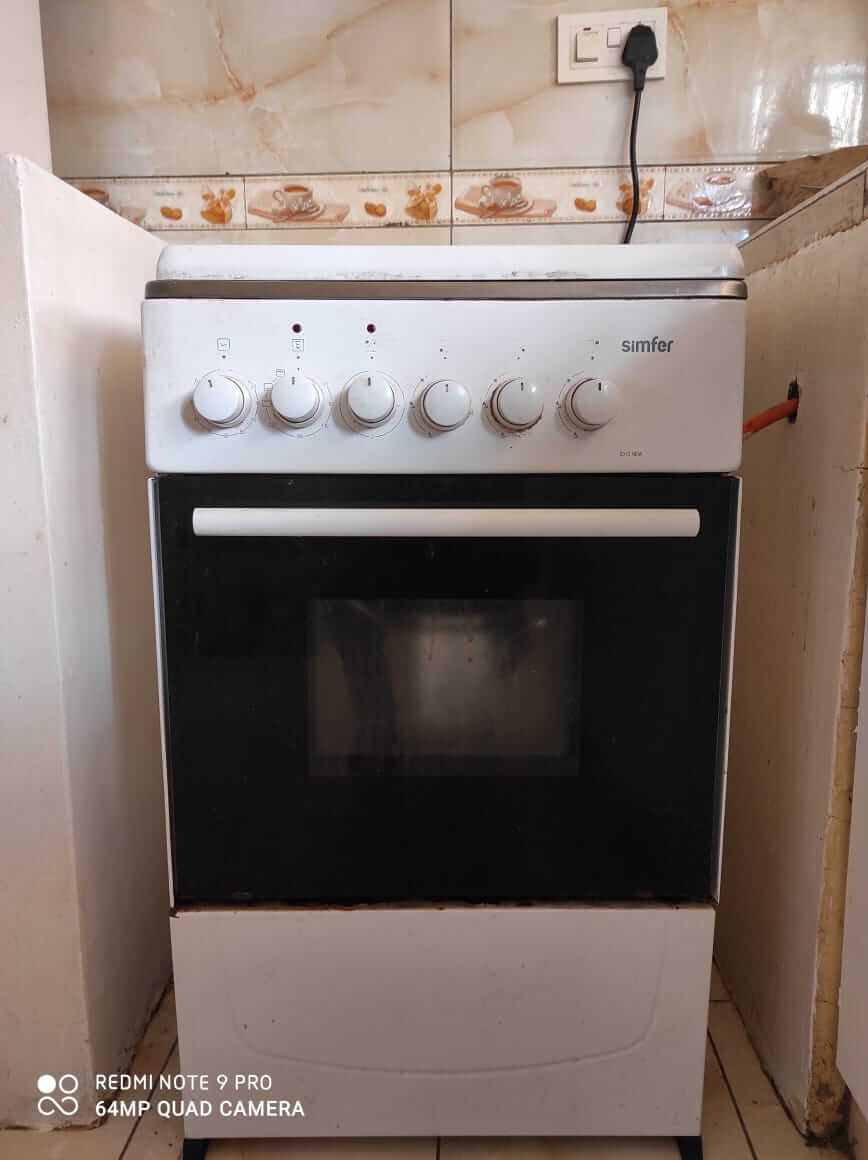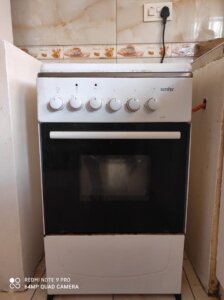Baking Basics: Know Your Oven

One of the key baking basics you need to master is to know your oven. Most of us have ovens in our houses but a recent Q & A on Instagram made me realize that we don’t fully know our ovens and are therefore scared of baking. Some of the other reasons I gathered was having a hard time following recipes and figuring out how the oven we own works..
You probably have a gas or electric oven or convection oven. The controls on your oven will vary depending on whether it’s a gas or electric oven. Temperatures in an electric oven are often even while the gas ovens fluctuate often. Have you ever tried baking a cake and it collapses or doesn’t cook on the inside? This could be a problem with how you set the temperatures. I’m going to share a a few guidelines on how to read and work with your oven whether you have a gas or an electric cooker.

Baking Basics: Know Your Oven-Tips On Baking In An Electric & Convection Ovens
Electric ovens heat from the upper and lower heating elements. They turn red hot as they work. They have a coil like element on the top and the bottom. Most of our home ovens are not 100% accurate especially if you’ve used your oven for a while, They are always off by about 15 degrees. This is why it’s important to find the hottest spots inside your oven.

Convection Oven usually has a fan that circulates hot air around the inside of the oven. The fan reduces hot and cool spots and helps the temperatures to be mare evenly distributed.
- Know your oven hot spots – You can do a simple bread test. Preheat oven to 180 degrees and arrange bread slices to fill your baking tray then put the tray in the middle of the oven. Bake for 5 minutes then remove. You’ll find that the bread slices will cook differently. You want to avoid the areas that are so hot as your cake will cook faster. Avoid the places closer to the top or the bottom as they’re the hottest. If you find that the slices are all or mostly burnt then that means that 180 C is too hot for your oven and you might need to reduce to something like 160 C.
- Always place your baked goods in the middle of the oven. I’m specifically talking of baked goods as there are other foods that can be cooked either closer to the top or the bottom. The middle part is the safest as you’ll get the most even distribution of heat. If you want to brown things quickly place at the top unless it’s something like Pizza which needs to be at the bottom. However in this blog post we’ll focus solely on dessert baking.
- Don’t overcrowd your tray ever. This will go hand in hand with not baking multiple things at a time meaning putting two baking sheets together into the oven. The reason I don’t recommend this is because I’ve tried it and it never works. When you bake multiple things you create an uneven heating pattern and most ovens are not made to distribute heat evenly. If you really have to bake multiple trays be sure to rotate from top to bottom often.
- Don’t open the door. I know most of our oven light do not work but resist the temptation to oven the door as this causes the oven temperature to drop. Use the window to check on the desserts and judge by the smell and appearance. If you have to check readiness by inserting the toothpick, remove whatever your baking, close the oven, check with a toothpick then return the cake. This ensures that the oven continues to heat and does not drop temperature.
- Use a baking pan with cold water at the bottom of the oven. Especially if you find that your cakes cook just fine but do not rise to the right height. Electric ovens tend to be dry so adding this pan will help keep the air moist.
- Always make sure your oven is clean before baking. This will make sure that the oven does not direct heat to the dirt causing it to overheat. Also you don’t want your food tasting like soot.
- Never use the highest temperature on your oven. I found out from the Q & A that most of our ovens have temperatures up to 250 degrees C. This temperature is so high and not necessary. I don’t even know why manufacturers put this high temperatures. A good temperature range to start with would be between 160 C to 180 C. I mostly use 180 C but if you find that most of your food burns faster try reducing to 160 C.
Learn Your Gas Oven-Tips On Baking In Gas Ovens
I won’t lie gas ovens can be tricky. I used to own one a few years back and the unpredictability of the temperature used to get to me. Sometimes it would work just fine while other times it would be disaster.
Gas ovens have their main heating element at the bottom of the oven, usually shielded by a sheet of metal with vents. This main bottom burner provides so much heat that gets pushed to the rest of the oven. Some ovens will have a second burner at the top but this is only used for broiling which is where you expose food to direct heat either to brown it faster or to dry it out.
If you find that when you use a gas oven and your baked goods have a problem of browning or crisping, it’s because gas ovens tend to be more humid than electric ovens. This happens because combustion of gas causes moisture to rise in the oven interfering with browning and crispiness.
- Let things bake a little longer than you think. If you find that your baked things seem not to bake all through, once your timer is done, reduce the heat to the lowest temperature your oven can go and leave the food to continue baking. Be sure to keep checking every 2-3 minutes to make sure that it’s not burning.
- Always rotate your tray. Gas ovens are known for having serious hot spots meaning that temperatures fluctuate quite often. It’s important to do a hot spot test with bread just to understand your gas oven. Also always rotate the tray 90 degree to ensure things bake evenly.
- Avoid baking tall cakes and stick to flat baked goods. I won’t lie trying to bake a tall cake in a gas oven is impossible. It will take too long and you’ll definitely end up with a burnt cake. Stick to things like cookies, shot flat cakes. You can build up a tall cake by assembling multiple flat cakes. It’s time consuming but you’re assured of cooked cakes.
- Stick to temperatures between 160 C and 190C and when your baked goods are done baking, you can move them to the top part to brown quickly. Be sure to check up on them. You can also try having a second baking tray at the top to shade your baked goods from burning.
- Never use the bottom part of your oven to place your baking tray. Since this is where the most heat comes from, you’ll risk the bottom part of your baked goods from burning. Use the upper part to place your tray.
These baking basics are general guidelines to get you started with your oven but the most important takeaway is that you need to know your own oven. It takes a few baking trials but you’ll get there. Every time something goes wrong, note it down then come back to this post and see how you can troubleshoot. Let me know in the comments what tip has caught your eye and the difficulty you face with your oven.
In the next post I’ll take you through some baking essentials and equipment to get you started on your baking journey. I hope I have minimized your fear of the oven and ignited your fire to try out baking. And if you don’t know where to start with baking you can purchase my Healthy Desserts eBook that contains fail proof recipes that are healthy and delicious. See you on the next post.
Love & Light,
Miss Kabaki.

This was a very interesting read. Can we have more of thiś type of informative content?
Yes. I’ll definitely be sharing more.
This is very Informative, well explained and above all I love the bread test. At times getting to know hotspots in an oven is challenging but the bread test shared is very handy
Yes I agree. And the bread test can be done frequently since the oven temperature drops as it ages.
Very insightful. Great article.
Thank you so much.